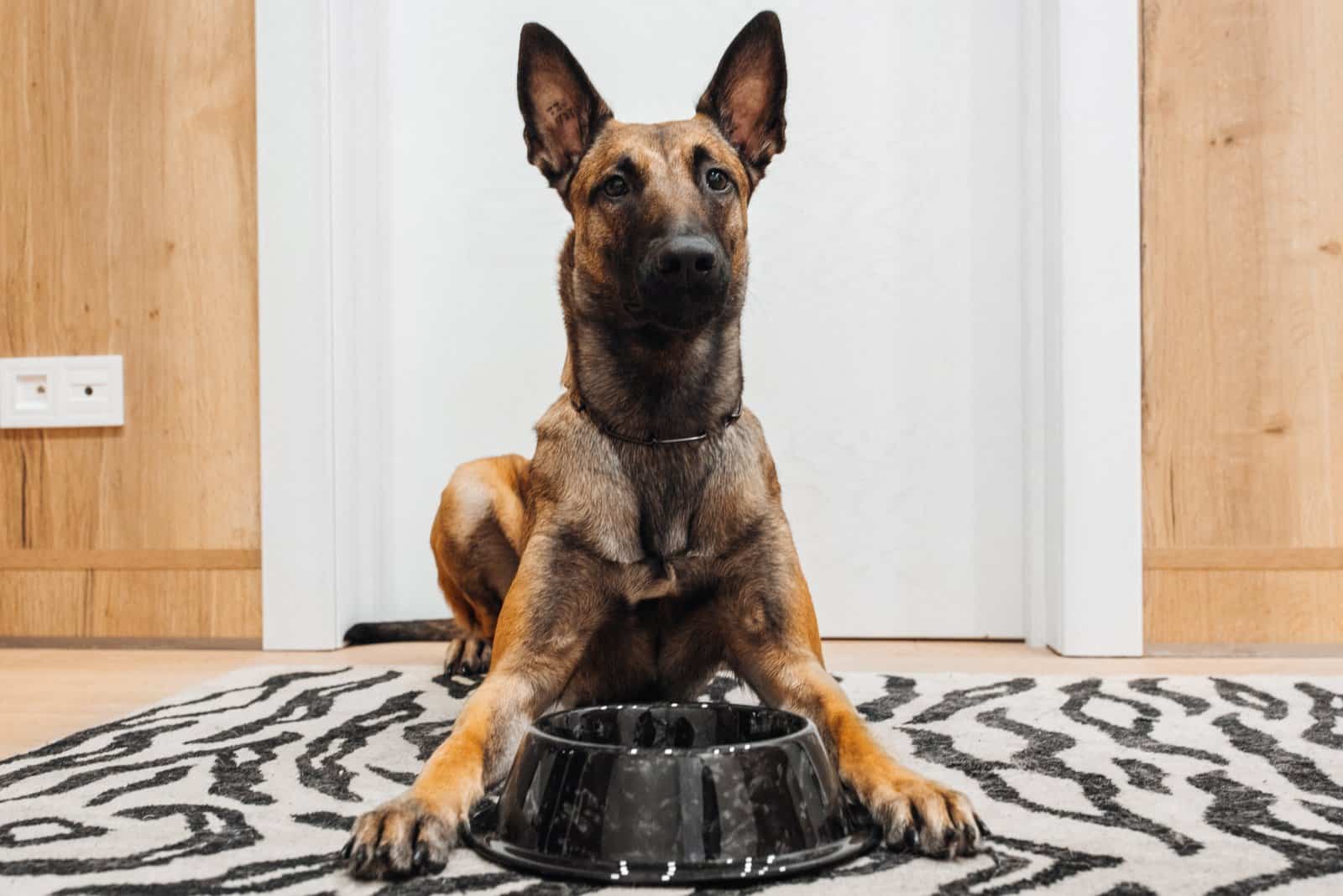The Belgian Malinois is a really smart working dog breed. They are great at not only herding, but they can also be trained to detect bombs, gas leaks, and drugs. They are also pretty cute!
We are guessing you’re here because you have questions about feeding your adorable Belgian Malinois puppy.
That’s great — thinking about your Belgian Malinois dogs’ nutritional needs is one of the first steps to becoming the great dog owner we know you will be.
It is important to consider the diet of your Mal when you take into account that these are medium-to-large dogs that work hard and are always on the go!
We will try to cover all the most important topics concerning your Belgian Malinois feeding questions, from how much you should feed your dog, what you should feed him, to how often you should feed him, and more!
We know that there is so much information out there when it comes to how to feed your adorable pooch so that it can grow into a healthy, adult dog with the challenge of it being an active dog breed.
You also might have questions concerning dog food, which has currently become all the rage. What is the best kind of food for a dog when you think about the pros and cons of kibble, a raw food diet (which is oftentimes homemade), and the combination of wet and dry food?
Every single dog owner and dog breed is different, which means that it is important to consider everybody’s needs individually. Find out what works the best between your dog and your family.
We have tried to look at all of the information in the most objective way so that all of our facts are correct.
However, also make sure to check with your vet if you have any additional questions.
We have tried to prepare a Belgian Malinois feeding chart that satisfies your curiosity and questions.
So, let’s get into the nitty-gritty of food!
The Belgian Malinois Feeding Chart For Puppies — How Much Should My Puppy Eat?
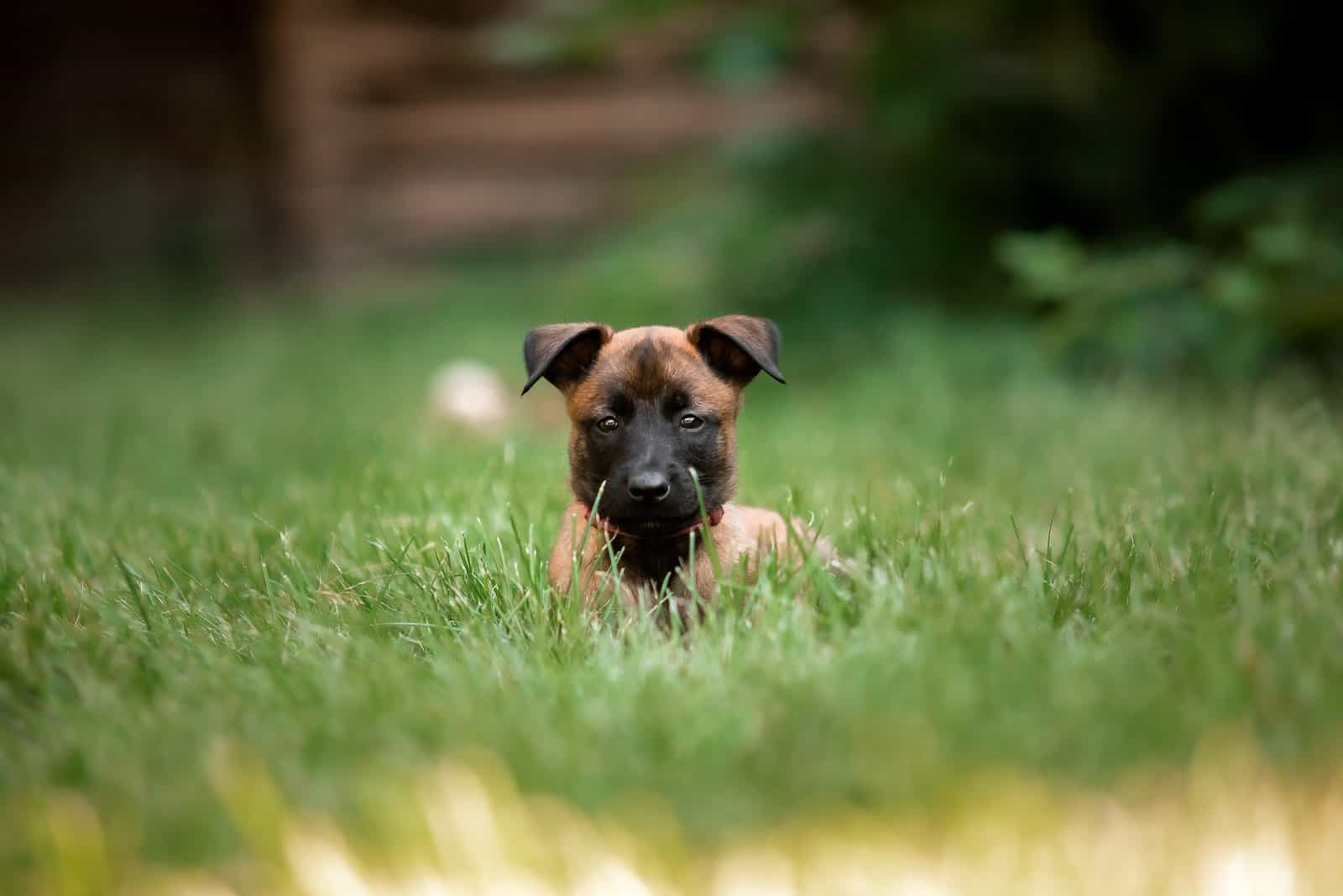
If You Just Got Your Puppy
If you have just gotten your puppy from a breeder, a rescue shelter (or maybe from grandma, who wanted to surprise you with this adorable pooch), you should feed it the diet that it is used to, as it can be a challenge for dogs to suddenly switch from one diet to another.
We know that you might want to change your puppy’s food, but you will have to be patient in doing so.
Experts believe it takes about a month for your puppy to get accustomed in order to start transitioning.
The fact of the matter is that your Mal puppy will be going through a lot of changes during this time period, and you want to make sure that it has enough time to prepare for transitioning.
You must understand that your pup has just moved to a new environment, so changing everything down to the very food it eats can be tough to swallow (pun intended!).
A month should be enough for a Belgian Malinois puppy to get used to being away from its brothers and sisters as well as momma!
The easiest transition for your dog will be to figure out what kind of food your pooch has been eating and stock up on that. Then, you can slowly start transitioning.
But, don’t transition suddenly! It is likely that your Belgian Malinois won’t be too happy about it and might even refuse to eat the new food.
Instead, we advise you to plan this new transition and stretch it out over the course of a week.
All you have to do is gradually cut back on the amount of the old food every day while adding more of the new until your puppy has completely switched over.
You can start out by feeding your pup 25 percent of the new food for the first two days while feeding it 75 percent of the old.
During days three and four, you can give your puppy 50 percent each, During days five and six, you can increase the new food to 75 percent and decrease the old to 25 percent.
Your puppy should be completely transitioned to the new food by day seven.
However, some Belgian Malinois puppies might need some more time to adjust, so make sure you are following your pooch’s personal adjusting period.
This should give it just enough time for its digestive system to adjust to the new dog food brand that you prefer. You wouldn’t want your pup’s gut bacteria to be disrupted.
During this time period, signs of digestive disruption can be gas, vomiting, diarrhea, lack of appetite, or weight loss.
If your puppy experiences these symptoms, you might wish to carry on giving it the old dog food in order to avoid allergic reactions.
You also might need to talk to a vet if you continue seeing signs of digestive disruptions or unusual changes in your dog’s weight.
Puppy Feeding Needs
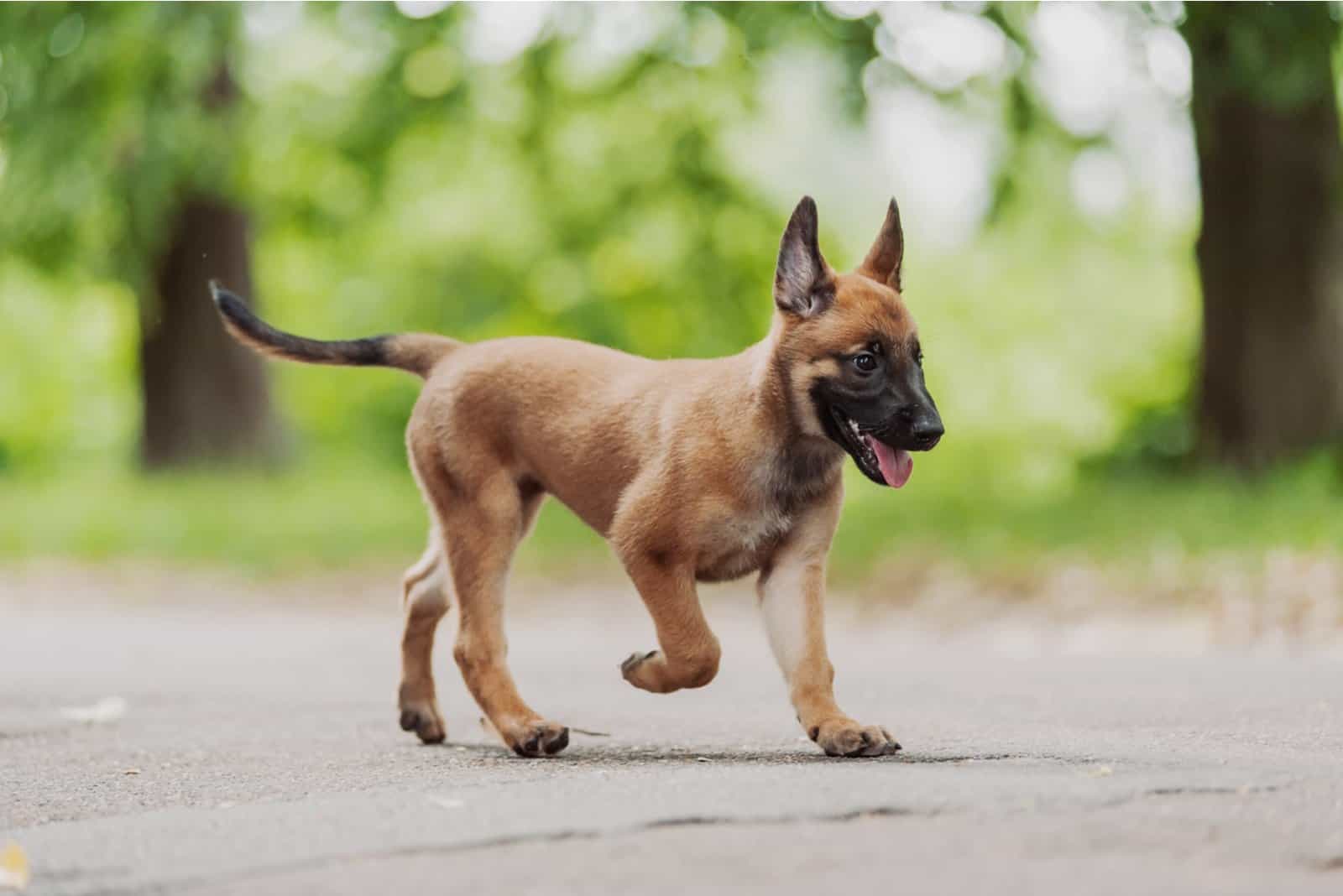
Before your puppy transitions to its new diet, you might want to think about your puppy’s feeding needs.
A Belgian Malinois feeding chart will only be useful if you are confident about what will make your dog a healthy pup.
It’s obvious that your dog’s diet affects its general wellbeing and happiness, so you should consider what it is your dog needs in order to be satisfied.
When it comes to commercial kibble, you should make sure that you purchase a brand that is known for its high quality. A high-quality kibble will have animal proteins listed as its first ingredient, with no preservatives or product meals.
A Belgian Malinois feeding chart for puppies of around six weeks of age should be based around four to six meals per day.
As they grow older, you will start decreasing the amount of times you feed them in a day, as their metabolism will start slowing down.
On average, a Belgian Malinois pup will need about three to four cups of dry food daily if it is under six months old.
You might be wondering why you would decrease the amount of times your dog eats food, but the fact of the matter is that puppies need more nutrients than adult dogs because they are still developing.
For instance, they need greater amounts of calcium for developing bones and teeth as well as a higher amount of protein for growing muscles, as large-breed puppies can be more sensitive to calcium shortages.
Since the Mal is considered to be a medium to large dog breed, protein becomes an even more important factor because they need more protein to develop into the larger dogs they will become.
When they are adults, they can be between 50 and 70 pounds!
You can expect Malinois pups, especially males, to benefit from a more controlled schedule and large-breed puppy foods.
When it comes to larger dog breeds, the best diets contain lower fat, and are less dense in general, with a proper protein-to-calcium ratio.
Such diets can help this dog breed, which is known for being a breed that is genetically at risk for elbow and hip dysplasia, in addition to other abnormalities associated with growth.
If you want to determine the exact amount you should feed your own pup, you should talk to your vet and learn if the nutrition that is listed on your dog’s food package is enough for its developing needs.
Your vet can tell you if you need to adjust your dog’s feeding amount or patterns.
Make sure you are giving small amounts of food to your puppy more often instead of larger meals once or twice a day.
The Belgian Malinois Feeding Chart For Your Puppy
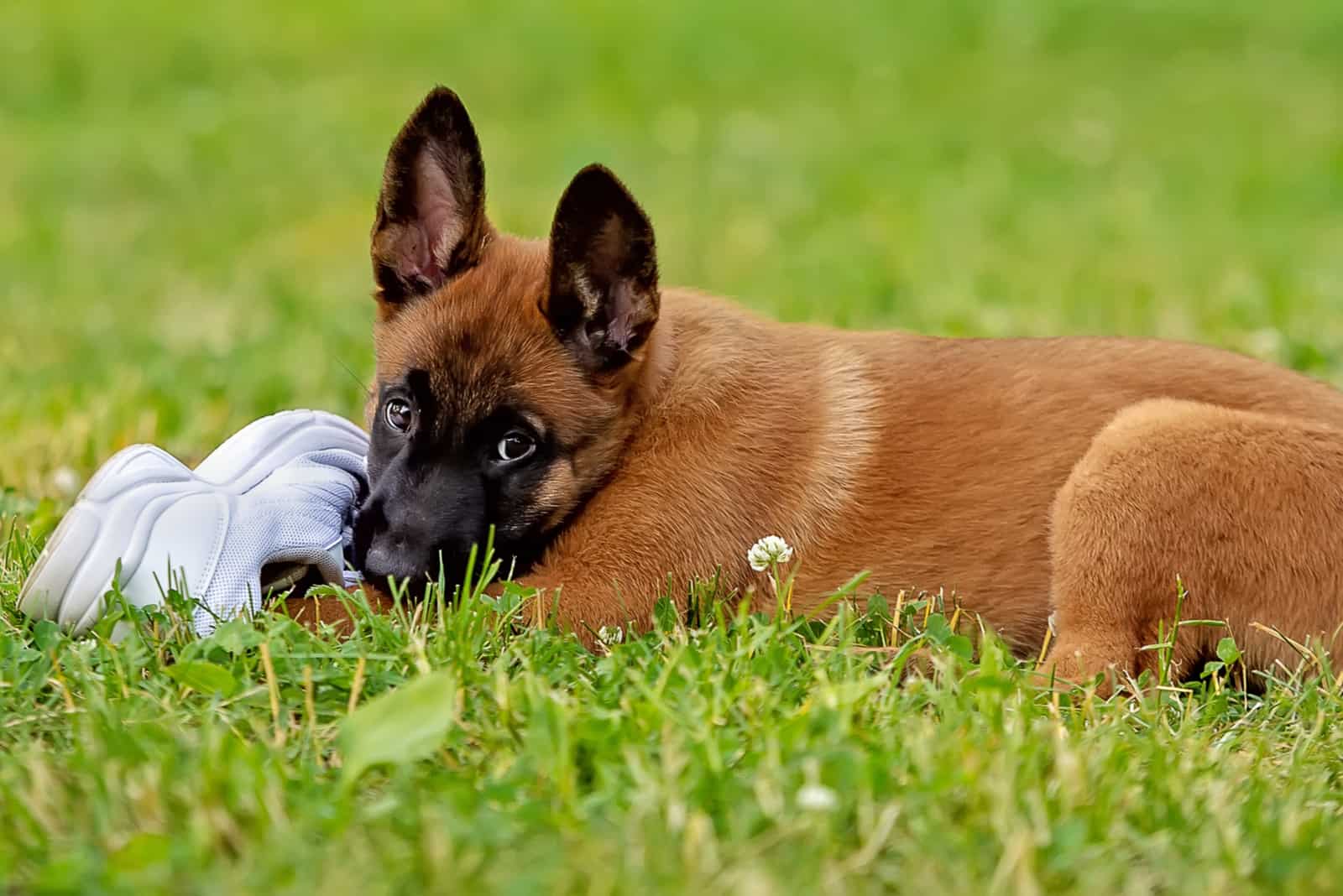
A great way of determining how much food to feed your adorable Belgian Malinois puppy is by using a method called the RER, which stands for the “Resting Energy Requirements” of your dog.
This RER of your dog can be found by using a straightforward formula. All you need to do is multiply your dog’s weight to the power of ¾ by 70.
For example, if your pup has around 11 kg, then you will multiply that number to the power of ¾, multiplied by 70. The RER would then be 70 X 11kgs ¾ = 420 calories per day.
Then, you would look at the amount of food you are feeding your puppy to make sure that the amount aligns with the calories of its RER.
You don’t have to feed your Belgian Malinois four to six times per day after they have become adults, but you must continue feeding them nutritious food in order for them to stay healthy!
The two-week-old Belgian Malinois puppy
More likely than not, you will have gotten an older puppy from a breeder, so you can just skip this step if your puppy is older.
If you do happen to own a Belgian Malinois momma and her puppies, however, you might want to read through this content.
When it is born and until it is two weeks old, your Belgian Malinois puppy will be completely dependent on its mother’s milk. At this point, it needs its mother’s warmth as well as her nourishment.
All you can do during this time period is make sure to oversee that all of its needs are being met by watching if the mother is doing her part.
You also should make sure that you do not handle the puppies too much because the mother might reject them, and we wouldn’t want that.
However, the mother might reject one of her pups even without your interference, which is why you want to keep a watchful eye on what is going on.
If it happens that the mother does end up rejecting one of the pups, you will need to purchase canine milk in order to substitute the nourishment she would have otherwise provided for her pup.
You also will have to invest in a heating pad to substitute for its mother’s warmth.
The four-week-old Belgian Malinois puppy
At the four-week mark, your Belgian Malinois puppy will undergo a couple of changes. One such change will be that they will start weaning off of their mother’s breast milk, and their eyes will start opening.
They are nearsighted at this time, and this is when you should start introducing solid foods to them.
You can’t expect to give your puppy dry kibble or other kinds of food directly, and have them start eating it without any prior preparation.
You should attempt to make this process easier for them by making sure the food you give them has just the right texture. It shouldn’t be too wet or too dry.
You can experiment a bit and adjust the food’s texture depending on what your puppies seem to be accepting at first.
The food should be like a watery paste in order for your puppies’ tender mouths and tiny teeth to manage it.
Once again, make sure that the food you give is extra nutritious and high in protein in order to ensure that your puppy is developing properly.
When your Belgian Malinois puppy starts getting used to chewing and its mouth isn’t as sensitive, you can make this watery paste less wet until it is used to drier food.
You can expect the puppy to occasionally revert to feeding from its mother, but don’t worry. This behavior will eventually stop completely.
You will have to make sure that the food you are giving it is consistent, as puppies love to form steady habits.
This means that you want to be giving it the same dog brand that you wish to continue feeding it. Or, perhaps there is a different special diet you wish to feed it as it grows older.
Whichever is the case, you want to make sure that you are following the exact recipe!
The reason for this is because experimenting too much with your puppies’ diet can cause an upset stomach, which might, in turn, cause diarrhea.
They might even refuse to eat, which can lead to more dire complications.
The six-week-old Belgian Malinois puppy
This time during your puppy’s growth is usually a comedy fest for dog owners.
During this period of time, your Belgian Malinois puppies will be much more active — you will catch them playing with and exploring everything they come across.
At this period of time, the puppies will not need their mother’s milk any longer, and will have shifted to regular dog food. They should also have a good appetite.
If you notice that your puppies are getting hungrier, you can go ahead and increase the amount of food you give them, but you should still feed them the same number of times you did previously.
As for the amount of food: one and a half to two cups over the course of four meals per day should do the trick!
Please don’t take this amount as key — make sure you pay attention to how the puppies respond to food.
You might have to decrease or increase the amount of food you give them depending on their individual growth needs.
The eight-week-old Belgian Malinois puppy
As for you guys who have decided to train your Belgian Malinois puppies before this time mark, good for you!
However, for those who still haven’t come around to that yet — this age period is a great place to start.
You might be tempted to work your active puppies around the clock because of all of that boisterous energy.
However, make sure you don’t overdo it — the puppies’ muscles and joints aren’t completely developed yet. This dog breed still has much more growing to do!
You can go ahead and increase the amount of food you give the pups since they are growing even more quickly at this point.
A good rule of thumb is to keep it at two to three cups of food spread over the course of four meals per day.
The 10-week-old Belgian Malinois puppy
During this time, you should be feeding your pup around three cups of food per day (once again, over the course of four meals).
You might be asking why your dog must eat around four meals per day. Remember — since your Belgian Malinois puppy is a larger dog breed, it has a lot of growing to do, and for that to happen, it needs a lot of calories in the form of protein and carbs!
However, always make sure you check on your dog to see if the amount of food you’re giving it is too much or not enough.
You don’t want an obese or a malnourished pup! Obesity and emaciation are always problems — you want to always make sure that your dog is of a healthy weight.
The 12-week-old Belgian Malinois puppy
Your Belgian Malinois at this time mark will start socializing more as it encounters different people and dogs (and other animals) in its surroundings.
You might be surprised to see your 12-week-old Belgian Malinois barking much more than it used to, but that’s normal, as it is much more active than it used to be.
It should be developing tougher muscles and bones at this point, and it should have a better grasp on its motor skills as it is navigating throughout its surroundings.
It will need more carbohydrates at this point.
You can feed your pup four cups of dog food on a daily basis now.
You can also try to decrease the feeding times to three times a day. If your puppy copes well with that, great! If not, you can continue feeding it four times a day like you used to.
Best Dog Food For Your Belgian Malinois Puppy
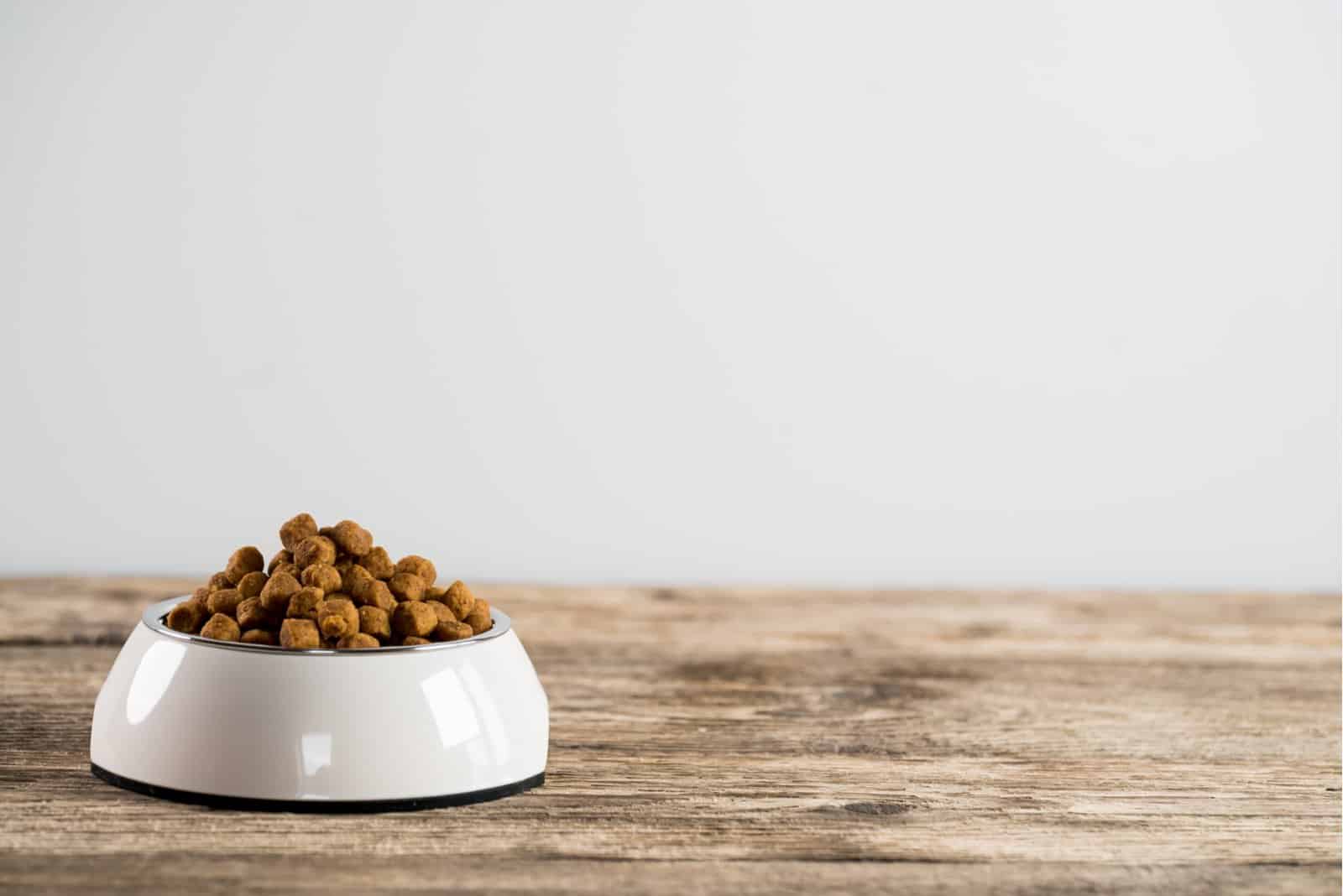
You might be wondering what the best dog food for this high-energy puppy is. After all, you want your Belgian Malinois to lead a healthy life, and good food is important to ensure overall health — especially when you know your dog has high activity levels.
Dry dog food (kibble)
We all know that dry dog food is usually the go-to choice for most dog owners. It is convenient, and your dog will usually love it.
Kibble is a great source of nutritious ingredients for your pup.
A good reason to feed your dog kibble is that it can be great for its teeth because the pieces help remove unwanted plaque.
You want to make sure that the kibble you are buying your puppy has a good formula that is made for puppies in order to aid their nutrition.
You don’t want your pup developing health issues because the kibble isn’t of high quality.
If a brand contains a whole protein source listed as the first ingredient, it can be a sign that the brand is a good one. High protein levels are always good for your dog.
You might want to search that there are no fillers like wheat, potato, soy, corn, or by-product meal in the kibble you get. Grain-free formulas make for good options.
Some supplements in your dog’s kibble can be promising. If you find a brand with DHA, that can be great for your dog’s vision and brain.
Also, those with omega-6 fatty acids can be good for your dog’s coat.
An appropriate amount of antioxidants is great, as this helps your dog’s immune system. Added probiotics are also fantastic for your pup’s digestive system. Taurine is good for your dog’s heart.
Certain tested and tried brands are:
1. Iams ProActive Health Smart Puppy Dog Food.
2. Royal Canin Large Puppy Dry Dog Food.
3. Zignature Lamb Limited Ingredient Formula Grain-Free Dry Dog Food.
4. Nutro Ultra Large Breed Adult Dry Dog Food.
5. Blue Buffalo Life Protection Formula Adult Chicken & Brown Rice Recipe Dry Dog Food.
Wet Food
When it comes to wet food, you might want to be a bit more careful because not all wet puppy foods have the same nutritional content as kibble.
However, your Belgian Malinois can benefit from better hydration that wet food usually offers. It is also great for puppies that are ill and have lost their appetite.
Some puppy owners combine wet and dry food for the benefits of both.
Raw diet and homemade foods
Feeding your dog raw meat and foods has become more popular recently, as it is recommended by many vets and reputable breeders.
Some believe that these diets are more natural and provide dogs with better nutrition.
However, science hasn’t caught up with all of this quite yet. It is difficult to get your dog the right nutrition on your own.
You need to educate yourself on dog nutrition if you want to feed your dog raw or homemade foods as its primary food source.
You also need to be quite careful about contamination, as this can be an issue for both your family and the pup.
For instance, raw chicken often has salmonella, and dogs can pass infections to humans through stools.
Homemade diets are different from feeding your dog a raw meat diet because they include cooked meats and veggies. However, the nutritional content might be imbalanced in these diets as well.
If you plan to have your dog on either diet, the best thing you can do is consult a vet to make sure that your dog is getting adequate nutrition.
Conclusion
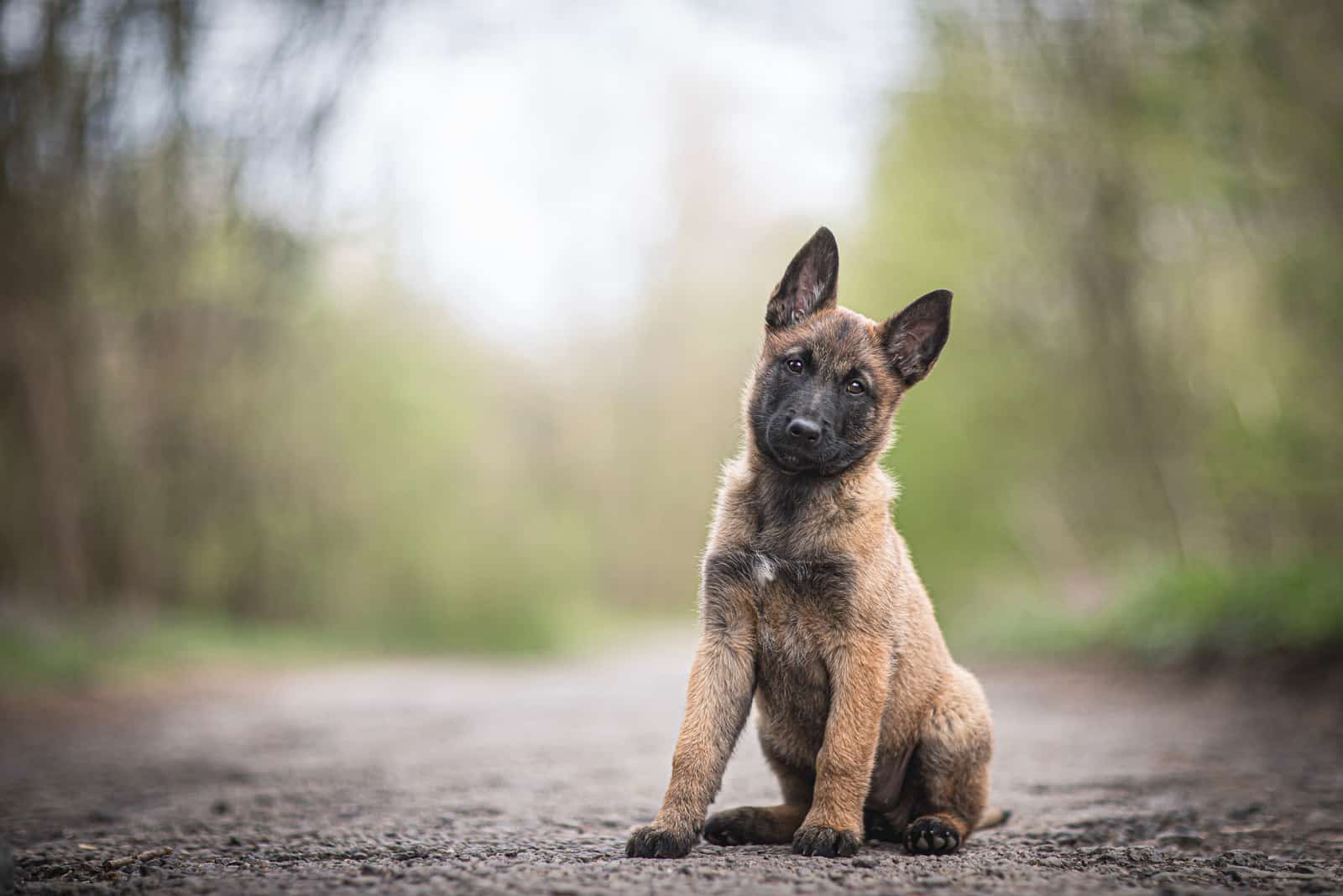
We hope that you are satisfied with the Belgian Malinois feeding chart we have prepared for you! We have tried to make a list of foods that will keep your Belgian Malinois happy and healthy!
Food does make a difference! Remember that Mals can be prone to elbow and hip dysplasia, which can be kept in check by making sure your dog gets proper exercise and good food.
Certain nutrition, such as supplementing with Vitamin A, might help certain eye issues, which can be of concern for your Belgian Malinois.
Always make sure you check with your vet if you need to make adjustments to your pup’s diet!
